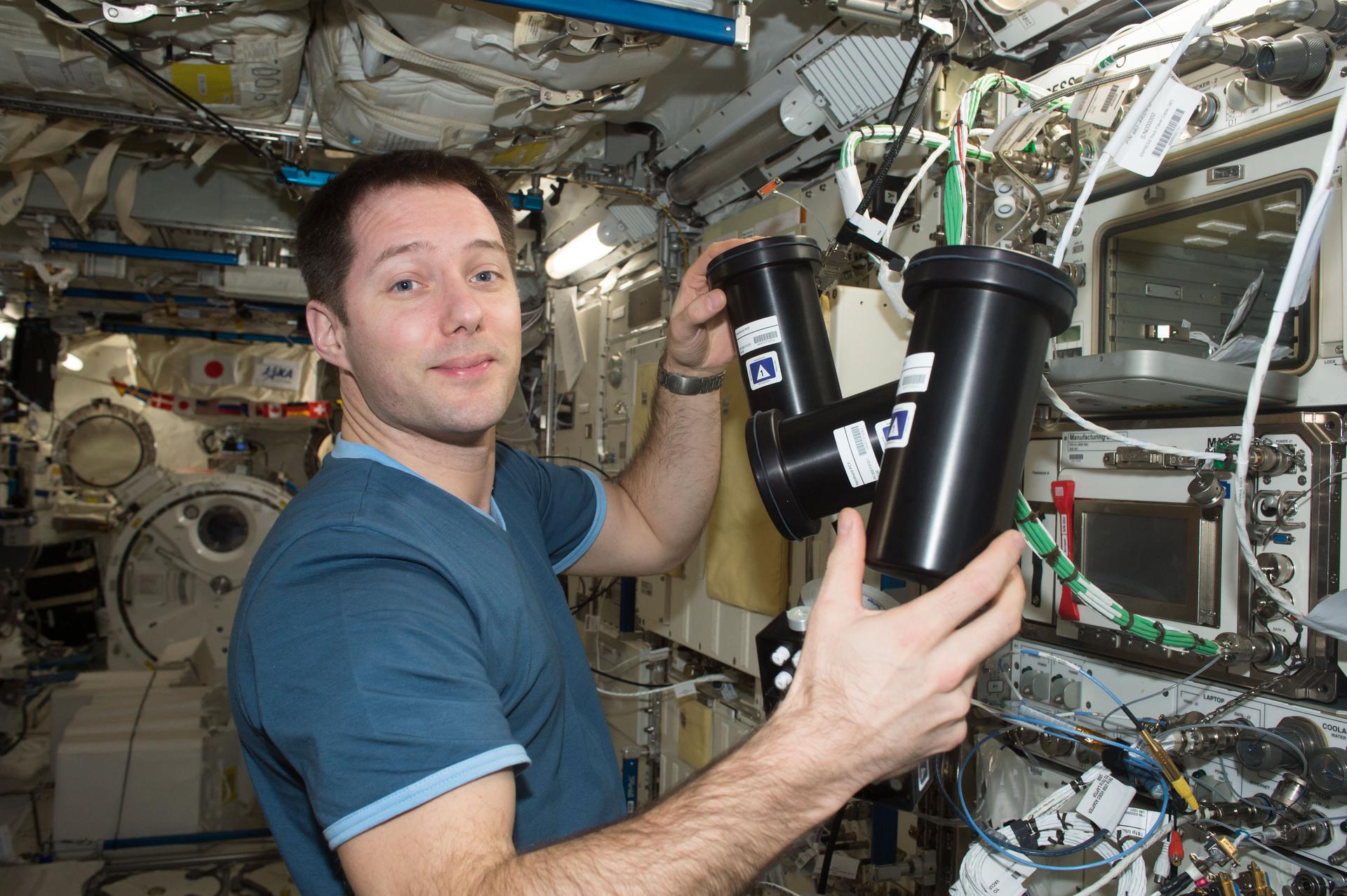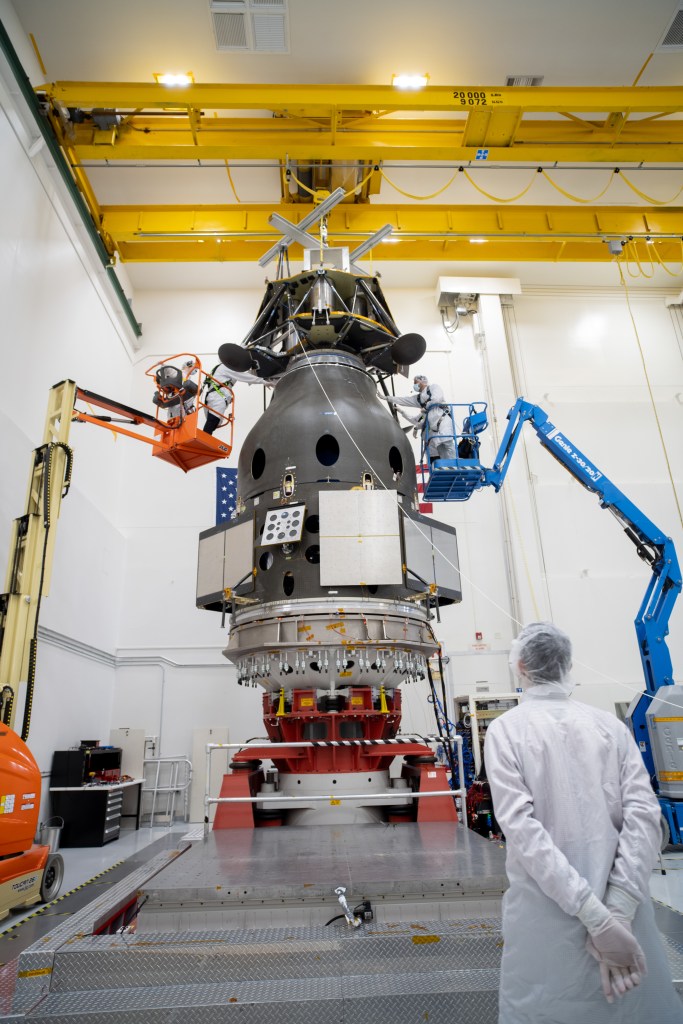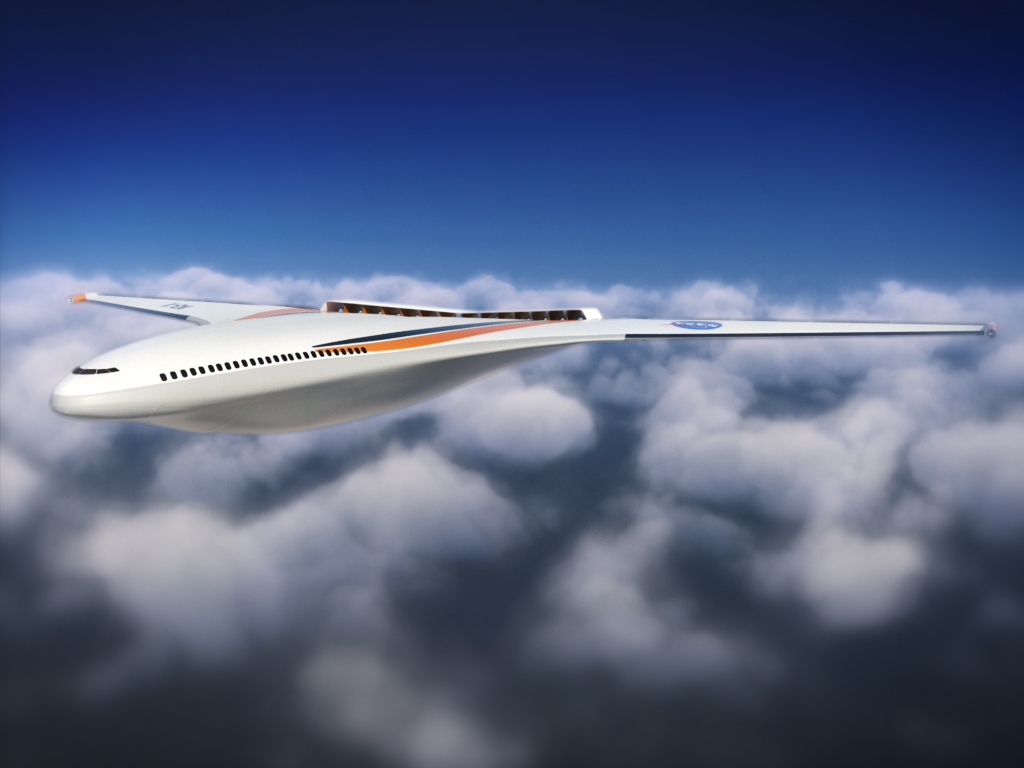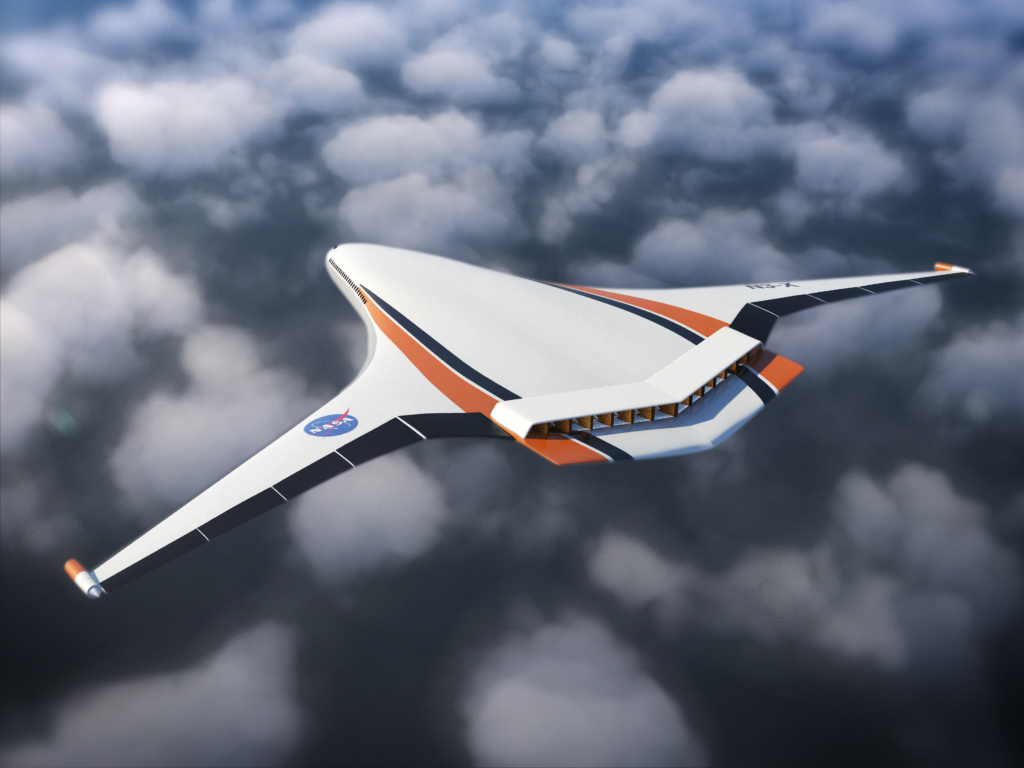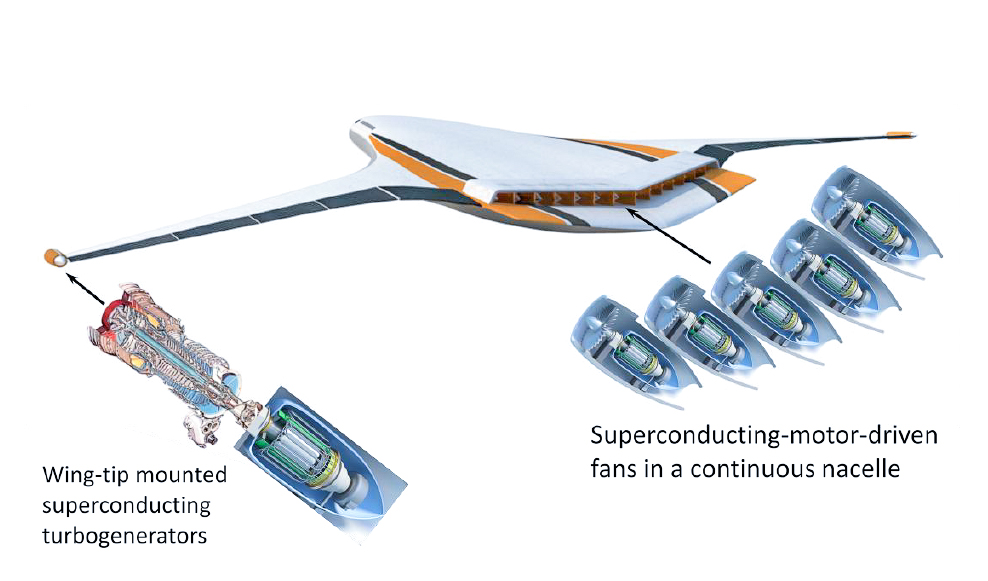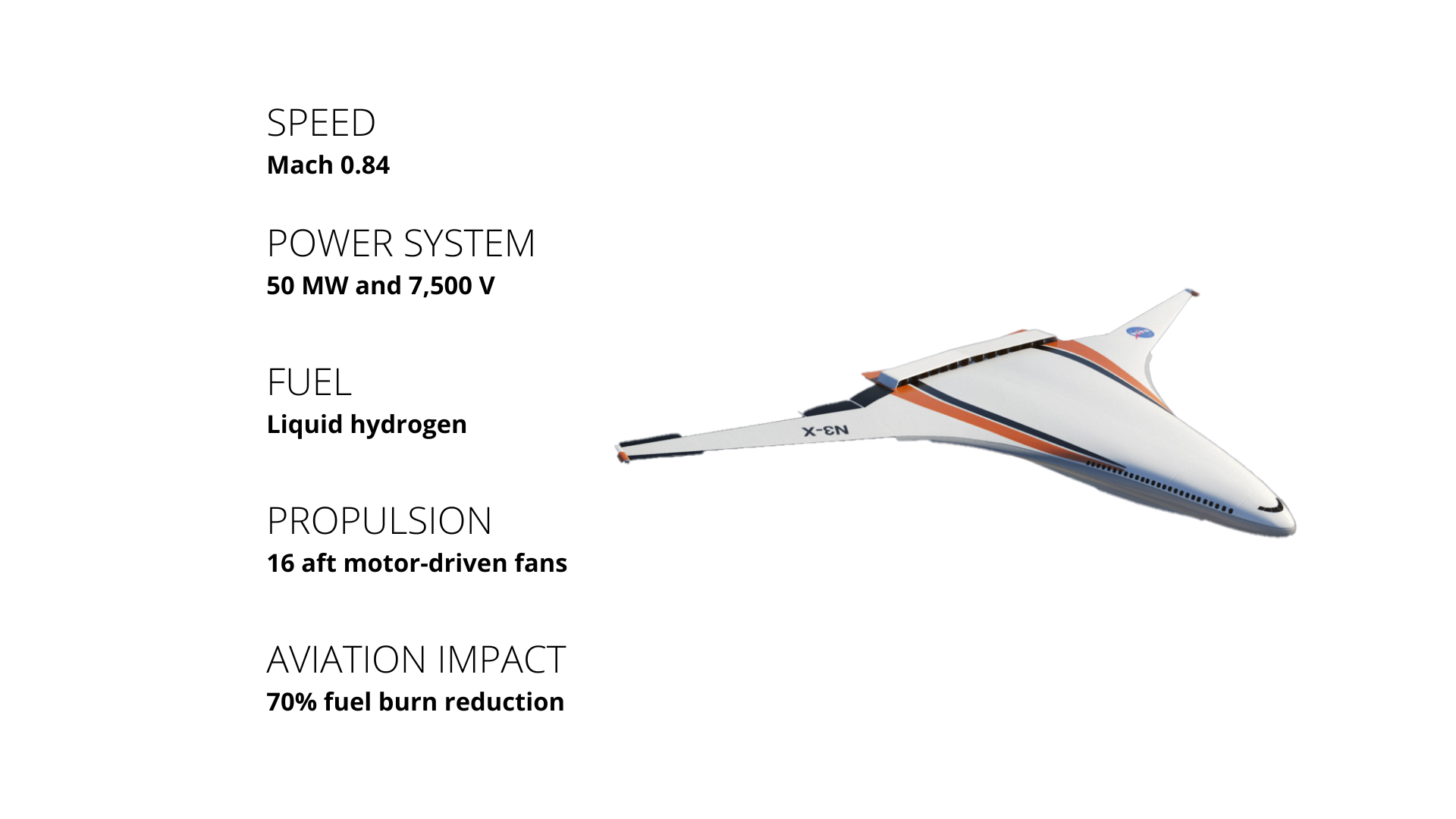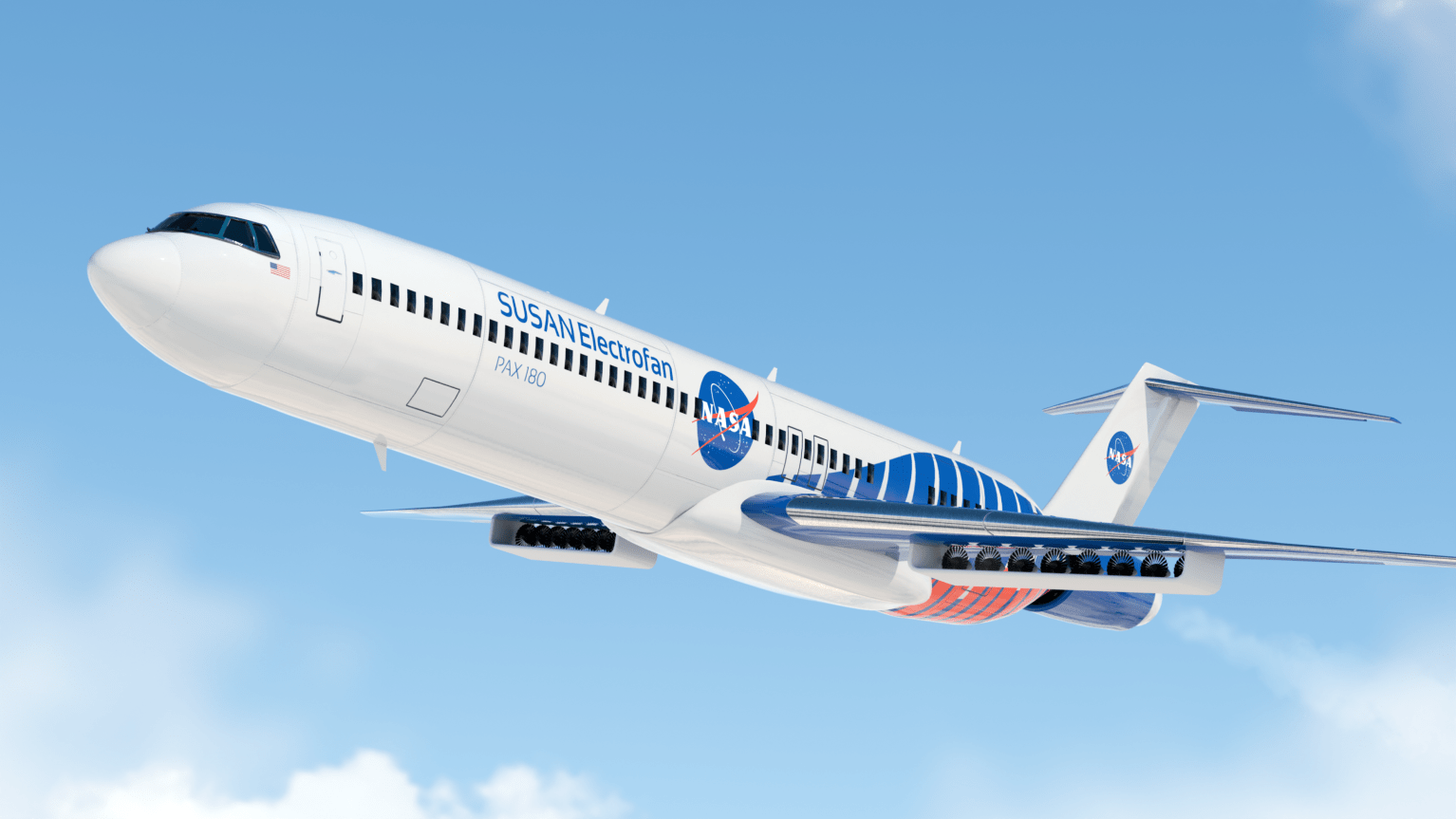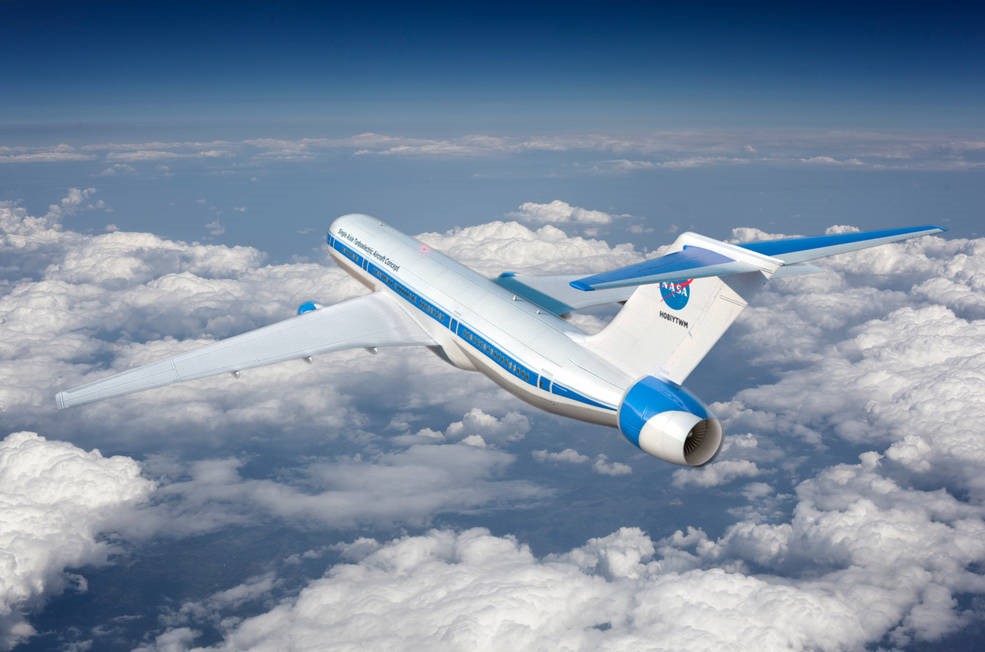Overview
The NASA N3-X is a revolutionary aircraft concept striving to make future commercial air travel more efficient, convenient, and sustainable. Featuring several advanced electrified aircraft propulsion (EAP) technologies and a unique design configuration, the N3-X offers innovative ways for next-generation electrified aircraft to significantly reduce fuel consumption, lower emission levels, and minimize noise levels over local communities.
Designed to operate with the same range, speed, and airport infrastructure of current large twin-aisle aircraft, this concept could transform future air travel by alleviating overcrowded airports and airspace while minimizing environmental impacts from flight.
Maximizing Aircraft Operations
The N3-X concept is a fully turboelectric aircraft with a hybrid wing body airframe designed to maximize aerodynamic efficiency. The aircraft features a turboelectric distributed propulsion system (TeDP) which uses several electric motors to drive distributed propulsors along the aircraft and provides the ability to separate power and thrust generation.
The electrical power distribution system aboard the aircraft employs lightweight, compact superconducting electric motors and generators that are able to conduct electricity with little resistance and perform more efficiently.
Sixteen small aft distributed fans driven by electric motors are located on top of the aircraft and provide propulsion while keeping vehicle noise to a minimum.
The aircraft is also designed with two turboelectric generators located on the aircraft’s wing tips. These generators use liquid hydrogen fuel to provide significant amounts of electrical power to the fans and motors at a higher efficiency to help minimize fuel consumption.
Innovative Aerodynamic Efficiency
The N3-X airframe uses a hybrid wing body design that merges the fuselage with the wing structures to achieve maximum aerodynamic efficiency. A hybrid wing body offers innovative ways to reduce fuel consumption and noise levels in commercial aircraft given its high lift-to-drag ratio.
The wide airfoil-shaped airframe enables the aircraft to generate large amounts of lift with minimal drag, which will significantly reduce fuel burn during flight.
The hybrid wing body airframe is also highly effective in managing boundary layer flow, which is slower-moving air near the surface of the aircraft. The airframe allows the distributed electric fans to ingest large amounts of this airflow, which can help further cut down on drag, reduce fuel burn, and minimize noise levels
Vehicle Capabilities
Improving Future Airline Operations
The N3-X’s revolutionary airframe and propulsion system designs offer unique opportunities to make future electrified aircraft more sustainable, while also increasing economic benefits and improving the flying experience for the public.
Hybrid wing body airframe configurations help reduce noise levels, which can allow for larger transport aircraft to fly with minimal disturbance over local communicates. They can also be an effective design option for cargo aircraft operating at night.
With its quieter, high-lift capabilities, the N3-X can also provide opportunities to relieve congested airport infrastructures and airspaces as air travel increases in the future.
The hybrid wing body design generates greater lift and allows the aircraft to approach shorter runways at steeper angles compared to traditional transport planes. This capability can allow larger commercial airliners to operate out of smaller local airports that are often underused and reduce traffic at larger airports.
The flying public can also enjoy a more convenient and efficient travel experience by flying out of local airports and minimizing the number of layovers required for longer-distance travel. With innovative airframe and propulsion designs, the N3-X capabilities will open a new era of sustainable flight for the future of electrified aircraft.





